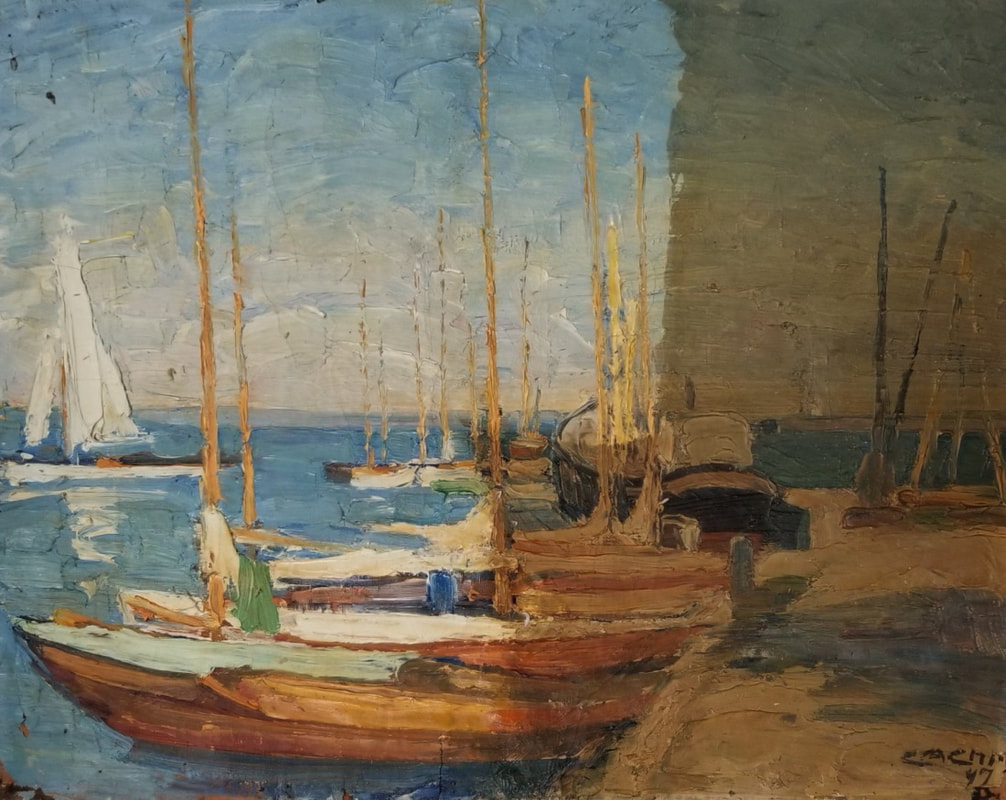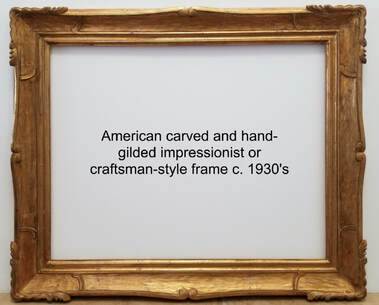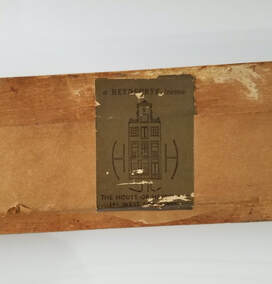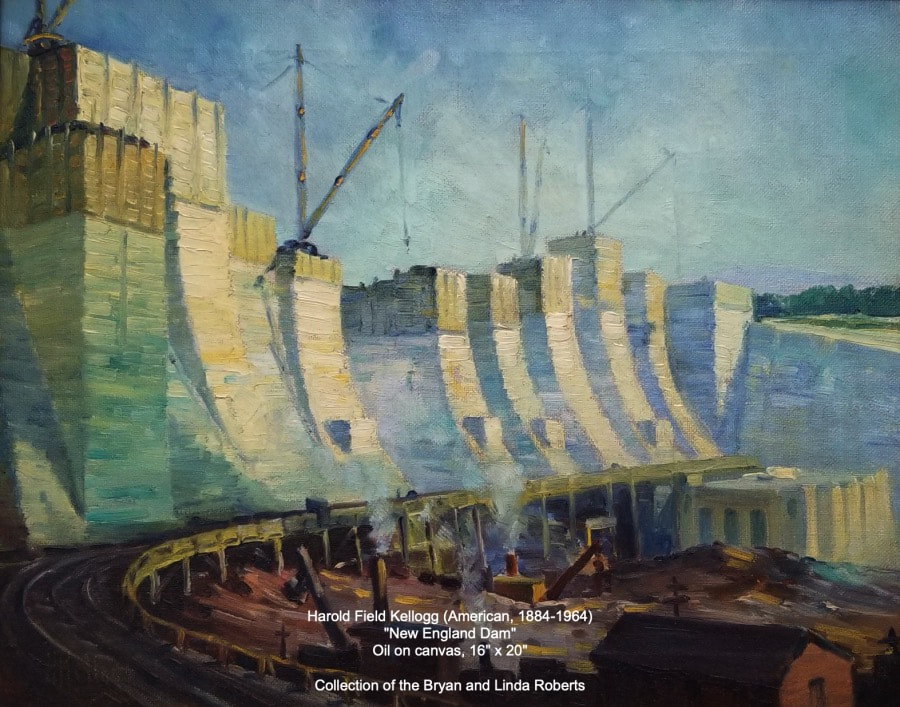|
If you spend any time around older paintings, you will inevitably bump up against the subject of restoration. By now, most of us have seen the various articles on one or two botched restoration efforts of Old Master works in Spain, with the best-known one being the 2012 incident at a church near Zaragoza. This attempt at restoration, done by a well-meaning elderly parishioner, was so dreadful that the result became known as the "monkey Christ". And yes, it was that bad.
Fortunately, most of us aren't going to be tasked with repairing 16th century works of art anytime soon. But, you may come face to face with the topic of restoration if you are thinking of buying, and perhaps even re-selling, an historic work. The first thing to know is that a little well-done restoration is not a deal-breaker... in fact, many famous paintings in museums have significant amounts of restoration. The rule of thumb when buying a painting is 10%... if more than that amount of the painting has been repaired, then you need to factor it into the price of the work. Clues as to it having been repaired will be visible patches on the back, areas on the front where the textures and finish are different (often times repaired areas are very smooth) and perhaps poor color matches in the repaired areas. Another clue will be if the painting has been lined. Often called "re-lined", which is actually incorrect (that would imply the painting has been lined twice), lining is where the canvas has been infused with wax to stabilize loose and cracked paint, torn areas, etc. Lining is a perfectly standard restoration technique but it often means the painting had fairly serious condition issues. Overpainting, also called in-painting, can usually be detected by the use of a UV light. Unfortunately, sophisticated masking varnishes are available now and clever sellers will sometimes employ these to hide the extent of the overpainting. Masking varnishes tend to glow green under a UV light so if you see that it has been used, tread carefully... there is no need for a masking varnish unless someone is trying to hide something. Having a painting cleaned is also a standard restoration practice and usually adds value to the work unless poorly done. Certain paints such as many greens are chemically unstable and are referred to as "fugitive colors". Thus, someone who gets careless in cleaning a painting can easily take these colors off, in which case the painting is referred to as having been "skinned". Suffice to say, this really clobbers the value of a painting. If you are unsure if a painting is dirty, look at the edges nearest the frame. Often times you will see a thin line of true color and this can give you a sense of what potential the painting might have. Back in my dealer days, I did vey well by buying dirty but good quality paintings since most people didn't realize how good the piece would be when cleaned. As far as the dirt goes, a gray cast often means the painting was in a home with fuel oil or coal heat. An orange cast (and sometimes accompanying odor) means nicotine. Fortunately, both usually come off rather easily with some simple household cleaners. I won't go into details here but anyone who is interested in a DIY approach is welcome to contact me for some instructions. You will want to do that before blasting away, though, trust me. One 'monkey Christ" is enough ;-) As with most categories, the market for period frames is well off its high, which was reached in the early 2000's. That said, good frames can still bring money. Here are some things to look for if you are on the hunt.
First, a little history. The earliest frames were actually carved wood with gilding applied to them. Or, in the case of the Dutch, often it was a black finish. These early carved frames are valuable but also highly uncommon, so the odds fo finding one from the 16th or 17th century are pretty low, at least here in the US. For American frames, the highest dollar value frames typically will be those made by either a master frame maker like Stanford White or one of the master impressionists like Childe Hassam. These frames can bring north of $10,000 at auction. Suffice to say, they are pretty rare and not something you will likely find in a general re-sale or antiques store. A little lower down the value scale will be the frames made by companies such as Newcomb-Macklin and Thanhardt-Burger. These are typically hand-carved and hand-gilded and can bring prices in the low thousands if a particularly nice frame. While these companies did make Louis-style frames, they are generally more associated with impressionist and craftsman-style frames. These frames, (and others like them by similar makers) you might very well find. Look either for labels on the back or hand-written frame maker's notes. These latter will usually reference size, color of base coat, and type of leaf used (22 gold leaf vs. metal leaf). Don't let the quality of the artwork deter you... more than once I have found exceptional frames with really bad paintings in them ;-) Another frame company to watch for is House of Hedenryk. These frames often are Louis-style and will frequently have a pale wash. These frames were typically used for works by 20th century school of Paris artists, many of whom were carried by galleries in the US. Look for the Heydenryk label on the back of the frame, which ideally will still be in place. Thrift stores and resale stores are good hunting grounds for these frames since many people mistake them for later "shabby chic" frames. I have purchased Heydenryk frames for as little as $10 at re-sale stores and had them bring over $100 on eBay. Especially nice ones can bring several hundred dollars, so keep your eyes peeled! The New Deal enacted during the Depression included an agency known as the Works Progress Administration (WPA). This agency encompassed a number of areas, with the largest focus being on road, bridge, and dam construction. It employed millions of jobless Americans and much of their work, including the TVA, became fixtures in American infrastructure.
Interestingly, the WPA also included funding for artists. To its credit, no preference was given to "sellable" art and thus even abstract painters like Jackson Pollock were given support. That said, the term "WPA art" tends to connote artwork that often depicted construction scenes and social realism, often in mural form. It is also often associated with the Regionalism movement epitomized by artists such as Thomas Hart Benton and Grant Wood. Today, this art remains popular among collectors. As one might suspect, the highest prices are commanded by the biggest art names. Still, even strong works by lesser known painters can bring good sums in the art market and should be something for a collector to consider acquiring. One note of caution: true WPA works (i.e. those directly paid for by the government) were ruled by the courts some time back to still be the property of the US government. Many of these works, originally display in state and county buildings throughout the US, were dispersed over the years and fell into private hands. Should you come by one of these works (often times they will have a WPA plaque on the frame), tread carefully if you go to sell it. If it comes to the government's attention, they will confiscate the work. Usually you will be given the opportunity to donate it and receive a tax deduction... otherwise, it will simply be taken away from you. My advice: make the donation ;-) |
AuthorBryan H. Roberts is a professional appraiser in Sarasota, FL. He is a member of the Florida State Guardianship Association and currently serves on the board of the local FSGA chapter. He is a past president of the Sarasota County Aging Network, a non-profit that provides grants to other non-profits benefiting seniors in need and is also a board member of PEL, an area non-profit whose resale store profits support programs and scholarships for at-risk and disadvantaged youth. He is certified in the latest Uniform Standards of Appraisal Practice (USPAP) Equivalent Archives
May 2024
Categories |






 RSS Feed
RSS Feed